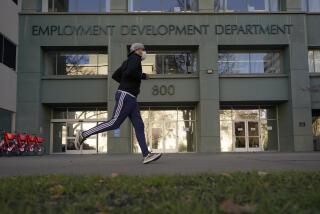Welfare Reform Generating State Surpluses, Study Finds
- Share via
WASHINGTON — Welfare reform has generated a $4.7-billion windfall for the states, handing governors an unexpected pile of cash that some have begun to divert to new priorities, such as education and tax relief, and others have stored for rainy days, according to a federal study.
The money results from the swift, steep declines in the nation’s public assistance rolls since the reforms took effect two years ago. Under the new system, states get a fixed amount of federal money no matter how many people they have on welfare, so those with the sharpest drops are awash in cash.
The fate of this “surplus” has been one of the mysteries of welfare reform, a question newly answered, to a degree, by Congress’ General Accounting Office in a report to be released today.
The answers are varied.
Many states--half of the 10 surveyed intensively--used their additional funds to beef up welfare programs. Others added welfare services and augmented the states’ general funds with money for other uses.
And some appeared to be saving the money, either purposefully or because they do not yet know what to do with the bonanza. Twenty-four states have left $1.7 billion of the money due them untouched in the federal treasury but still available for the states’ future welfare needs. The existence of this money has created concern among some state officials that Congress will snatch the funds for other programs, the GAO said.
Federal law prohibited states from reducing their state welfare spending by more than 25%. The average decrease has been 22%, the GAO found. But even this reduction has given states millions of dollars that can be reallocated. California reduced its share of total welfare program spending by $367 million.
More to Read
Sign up for Essential California
The most important California stories and recommendations in your inbox every morning.
You may occasionally receive promotional content from the Los Angeles Times.









